Attenuative effects of collagen peptide from milkfish (Chanos chanos) scales on ovariectomy-induced osteoporosis
- PMID: 38268910
- PMCID: PMC10804110
- DOI: 10.1002/fsn3.3746
Attenuative effects of collagen peptide from milkfish (Chanos chanos) scales on ovariectomy-induced osteoporosis
Abstract
Osteoporosis is characterized by low bone mass, bone microarchitecture disruption, and collagen loss, leading to increased fracture risk. In the current study, collagen peptides were extracted from milkfish scales (MS) to develop potential therapeutic candidates for osteoporosis. MS was used to synthesize a crude extract of fish scales (FS), collagen liquid (COL), and hydroxyapatite powder (HA). COL samples were further categorized according to the peptide size of total COL (0.1 mg/mL), COL < 1 kDa (0.1 mg/mL), COL: 1-10 kDa (0.1 mg/mL), and COL > 10 kDa (0.1 mg/mL) to determine it. Semi-quantitative reverse transcription polymerase chain reaction (sqRT-PCR) and immunofluorescence labeling were used to assess the expression levels of specific mRNA and proteins in vitro. For in vivo studies, mice ovariectomy (OVX)-induced postmenopausal osteoporosis were developed, while the sham surgery (Sham) group was treated as a control. Collagen peptides (CP) from MS inhibited osteoclast differentiation in RAW264.7 cells following an insult with nuclear factor kappa-B ligand (RANKL). CP also enhanced osteoblast proliferation in MG-63 cells, possibly through downregulating NFATc1 and TRAP mRNA expression and upregulating ALP and OPG mRNA levels. Furthermore, COL1 kDa also inhibited bone density loss in osteoporotic mice. Taken together, CP may reduce RANKL-induced osteoclast activity while promoting osteoblast synthesis, and therefore may act as a potential therapeutic agent for the prevention and control of osteoporosis.
Keywords: milkfish scales; osteoblast; osteoclast; osteoporosis; ovariectomized.
© 2023 The Authors. Food Science & Nutrition published by Wiley Periodicals LLC.
Conflict of interest statement
The authors report no conflict of interest in relation to the work.
Figures
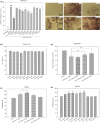
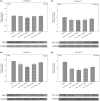
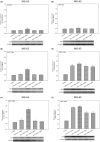
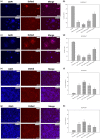
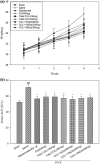
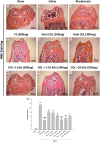

Similar articles
-
Cyperus Rotundus L. extract suppresses RANKL-induced osteoclastogenesis through NFATc1/c-fos downregulation and prevent bone loss in OVX-induced osteoporosis rat.J Ethnopharmacol. 2017 Jun 9;205:186-194. doi: 10.1016/j.jep.2017.03.017. Epub 2017 Mar 15. J Ethnopharmacol. 2017. PMID: 28315458
-
Effect of Zuoguiwan on osteoporosis in ovariectomized rats through RANKL/OPG pathway mediated by β2AR.Biomed Pharmacother. 2018 Jul;103:1052-1060. doi: 10.1016/j.biopha.2018.04.102. Epub 2018 Apr 25. Biomed Pharmacother. 2018. PMID: 29710663
-
Yukmijihwang-Tang Suppresses Receptor Activator of Nuclear Factor Kappa-B Ligand (RANKL)-Induced Osteoclast Differentiation and Prevents Ovariectomy (OVX)-Mediated Bone Loss.Molecules. 2021 Dec 14;26(24):7579. doi: 10.3390/molecules26247579. Molecules. 2021. PMID: 34946658 Free PMC article.
-
Hydrogen gas protects against ovariectomy-induced osteoporosis by inhibiting NF-κB activation.Menopause. 2019 Jul;26(7):785-792. doi: 10.1097/GME.0000000000001310. Menopause. 2019. PMID: 31083022
-
Anethole inhibits RANKL-induced osteoclastogenesis by downregulating ERK/AKT signaling and prevents ovariectomy-induced bone loss in vivo.Int Immunopharmacol. 2021 Nov;100:108113. doi: 10.1016/j.intimp.2021.108113. Epub 2021 Sep 13. Int Immunopharmacol. 2021. PMID: 34530203
References
-
- An, J. , Yang, H. , Zhang, Q. , Liu, C. , Zhao, J. , Zhang, L. , & Chen, B. (2016). Natural products for treatment of osteoporosis: The effects and mechanisms on promoting osteoblast‐mediated bone formation. Life Sciences, 147, 46–58. - PubMed
-
- Asagiri, M. , Sato, K. , Usami, T. , Ochi, S. , Nishina, H. , Yoshida, H. , Morita, I. , Wagner, E. F. , Mak, T. W. , Serfling, E. , & Takayanagi, H. (2005). Autoamplification of NFATc1 expression determines its essential role in bone homeostasis. The Journal of Experimental Medicine, 202(9), 1261–1269. - PMC - PubMed
-
- Asserin, J. , Lati, E. , Shioya, T. , & Prawitt, J. (2015). The effect of oral collagen peptide supplementation on skin moisture and the dermal collagen network: Evidence from an ex vivo model and randomized, placebo‐controlled clinical trials. Journal of Cosmetic Dermatology, 14(4), 291–301. - PubMed
LinkOut - more resources
Full Text Sources
Other Literature Sources
Miscellaneous

